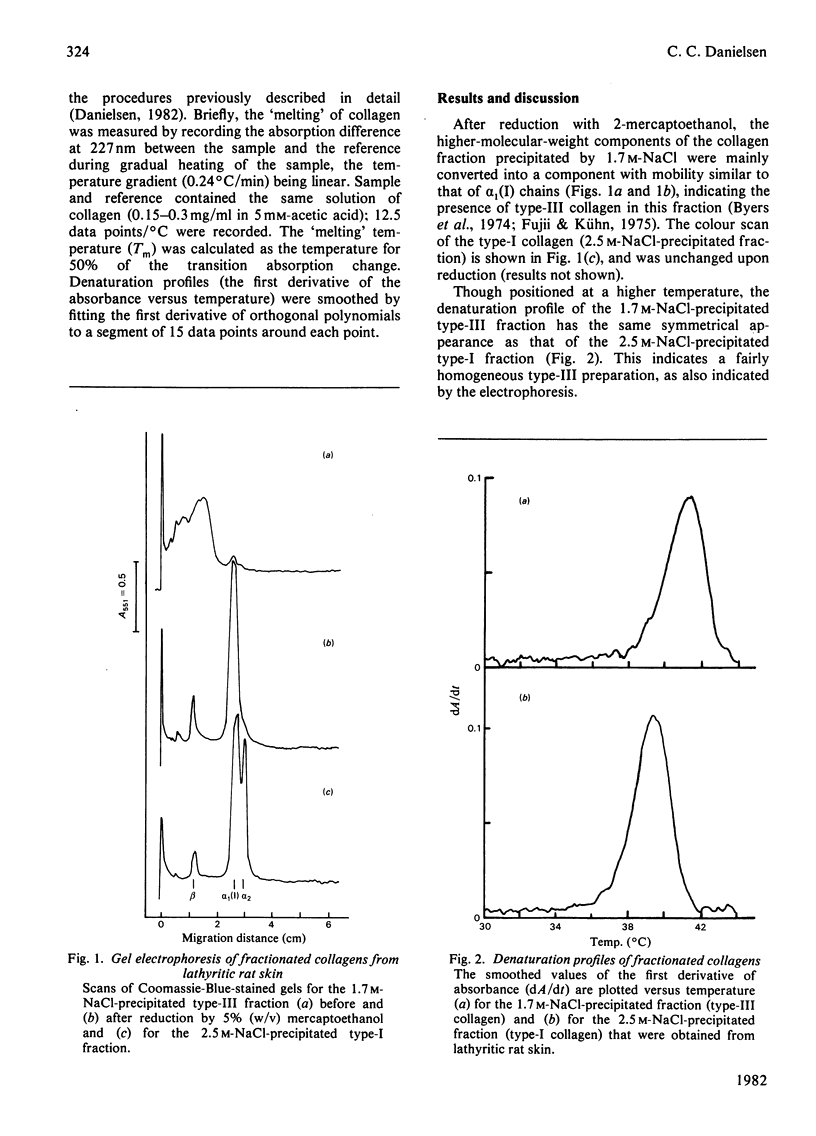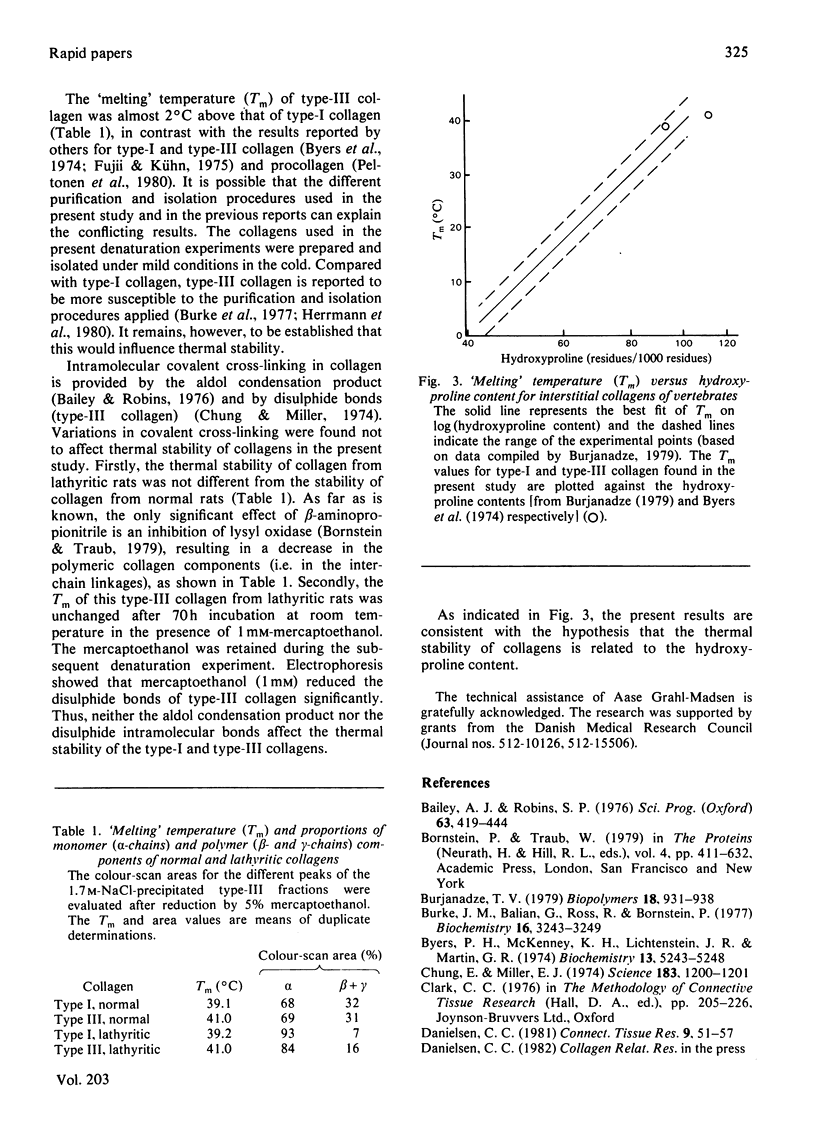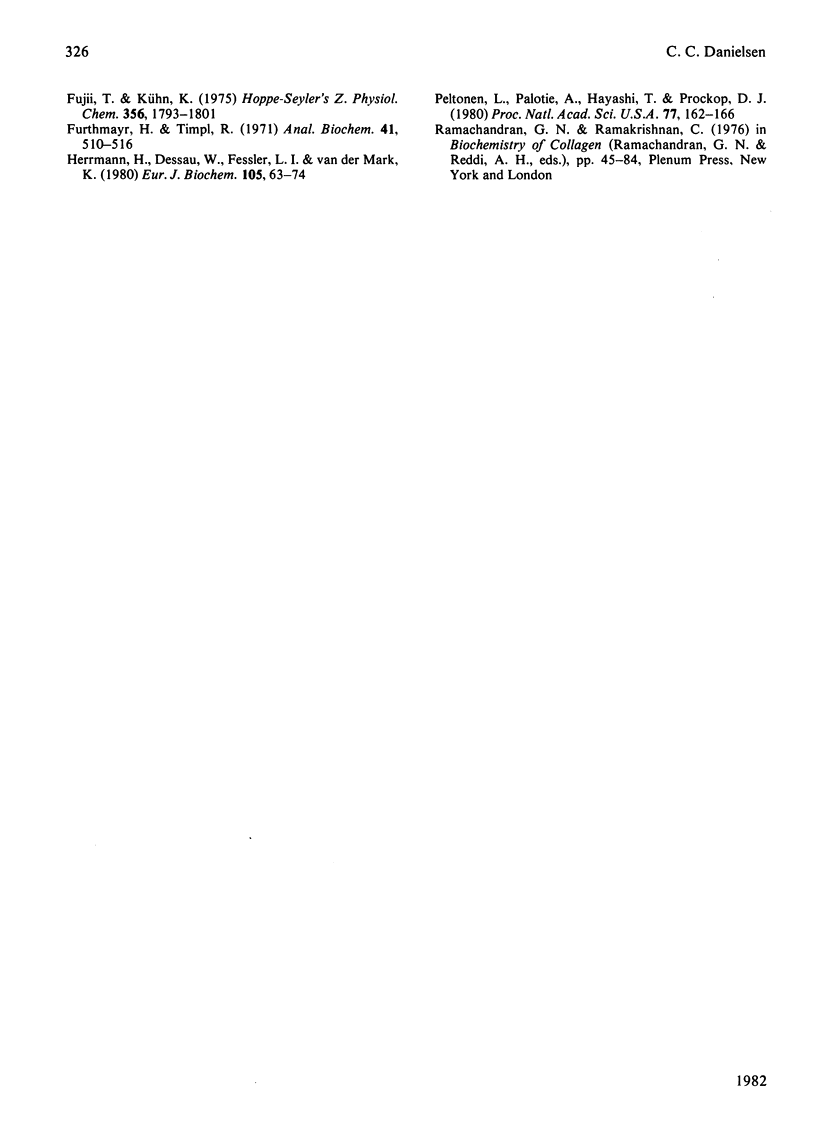Abstract
Type-I and type-III collagens were obtained by differential salt fractionation of neutral-salt-soluble collagen from rat skin. Their thermal stabilities were determined by u.v. difference spectroscopy. The `melting' temperature (Tm) in 5mm-acetic acid of type-III collagen was almost 2°C above that of type-I collagen. Intramolecular covalent cross-linking had no effect on the thermal stability.
Full text
PDF



Selected References
These references are in PubMed. This may not be the complete list of references from this article.
- Bailey A. J., Robins S. P. Current topics in the biosynthesis, structure and function of collagen. Sci Prog. 1976 Autumn;63(251):419–444. [PubMed] [Google Scholar]
- Burjanadze T. V. Hydroxyproline content and location in relation to collagen thermal stability. Biopolymers. 1979 Apr;18(4):931–938. doi: 10.1002/bip.1979.360180413. [DOI] [PubMed] [Google Scholar]
- Burke J. M., Balian G., Ross R., Bornstein P. Synthesis of types I and III procollagen and collagen by monkey aortic smooth muscle cells in vitro. Biochemistry. 1977 Jul 12;16(14):3243–3249. doi: 10.1021/bi00633a031. [DOI] [PubMed] [Google Scholar]
- Byers P. H., McKenney K. H., Lichtenstein J. R., Martin G. R. Preparation of type III procollagen and collagen from rat skin. Biochemistry. 1974 Dec 3;13(25):5243–5248. doi: 10.1021/bi00722a030. [DOI] [PubMed] [Google Scholar]
- Chung E., Miller E. J. Collagen polymorphism: characterization of molecules with the chain composition (alpha 1 (3)03 in human tissues. Science. 1974 Mar;183(130):1200–1201. doi: 10.1126/science.183.4130.1200. [DOI] [PubMed] [Google Scholar]
- Danielsen C. C. Mechanical properties of reconstituted collagen fibrils. A study on reconstitution methodology and influence of in vitro maturation. Connect Tissue Res. 1981;9(1):51–57. doi: 10.3109/03008208109160239. [DOI] [PubMed] [Google Scholar]
- Fujii T., Kühn K. Isolation and characterization of pepsin-treated type III collagen from calf skin. Hoppe Seylers Z Physiol Chem. 1975 Nov;356(11):1793–1801. doi: 10.1515/bchm2.1975.356.2.1793. [DOI] [PubMed] [Google Scholar]
- Furthmayr H., Timpl R. Characterization of collagen peptides by sodium dodecylsulfate-polyacrylamide electrophoresis. Anal Biochem. 1971 Jun;41(2):510–516. doi: 10.1016/0003-2697(71)90173-4. [DOI] [PubMed] [Google Scholar]
- Herrmann H., Dessau W., Fessler L. I., von der Mark K. Synthesis of types I, III and AB2 collagen by chick tendon fibroblasts in vitro. Eur J Biochem. 1980 Mar;105(1):63–74. doi: 10.1111/j.1432-1033.1980.tb04474.x. [DOI] [PubMed] [Google Scholar]
- Peltonen L., Palotie A., Hayashi T., Prockop D. J. Thermal stability of type I and type III procollagens from normal human fibroblasts and from a patient with osteogenesis imperfecta. Proc Natl Acad Sci U S A. 1980 Jan;77(1):162–166. doi: 10.1073/pnas.77.1.162. [DOI] [PMC free article] [PubMed] [Google Scholar]


